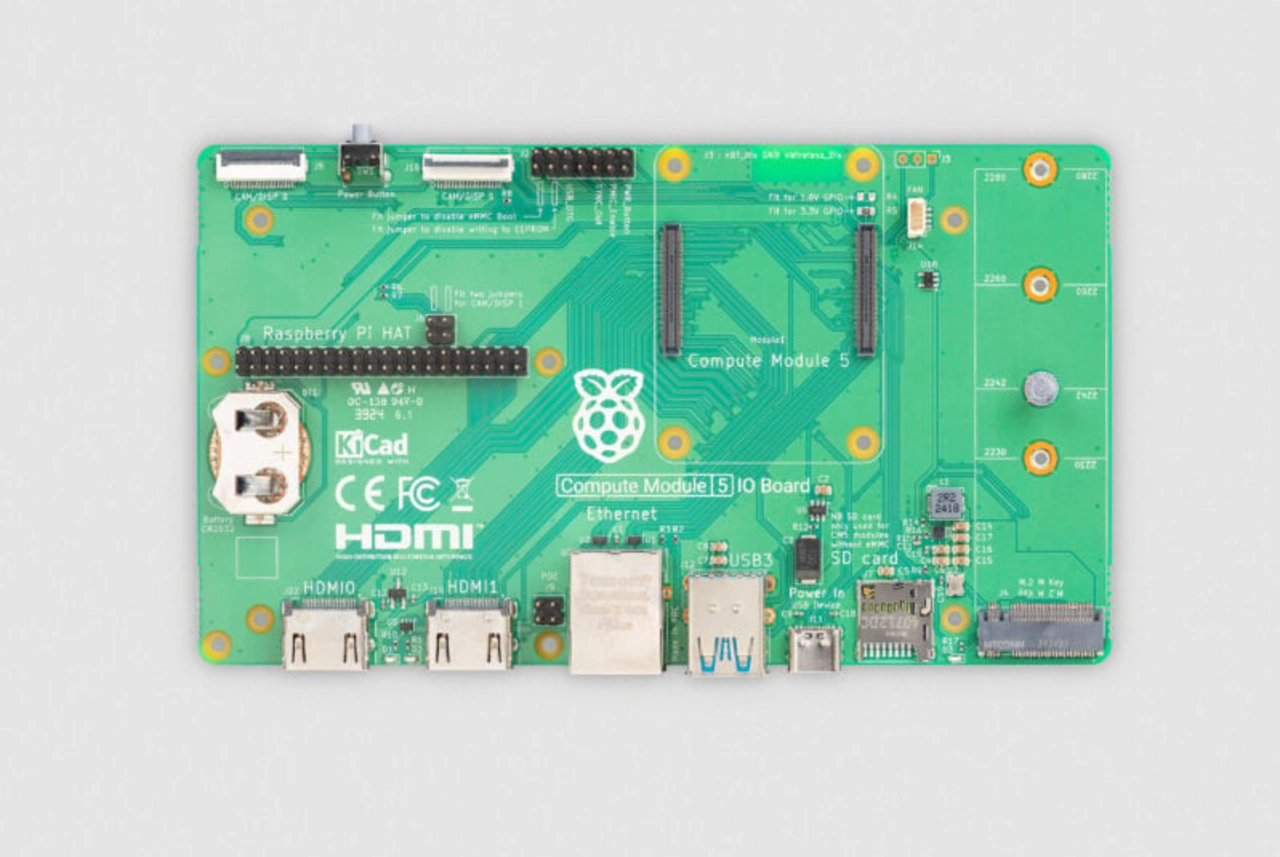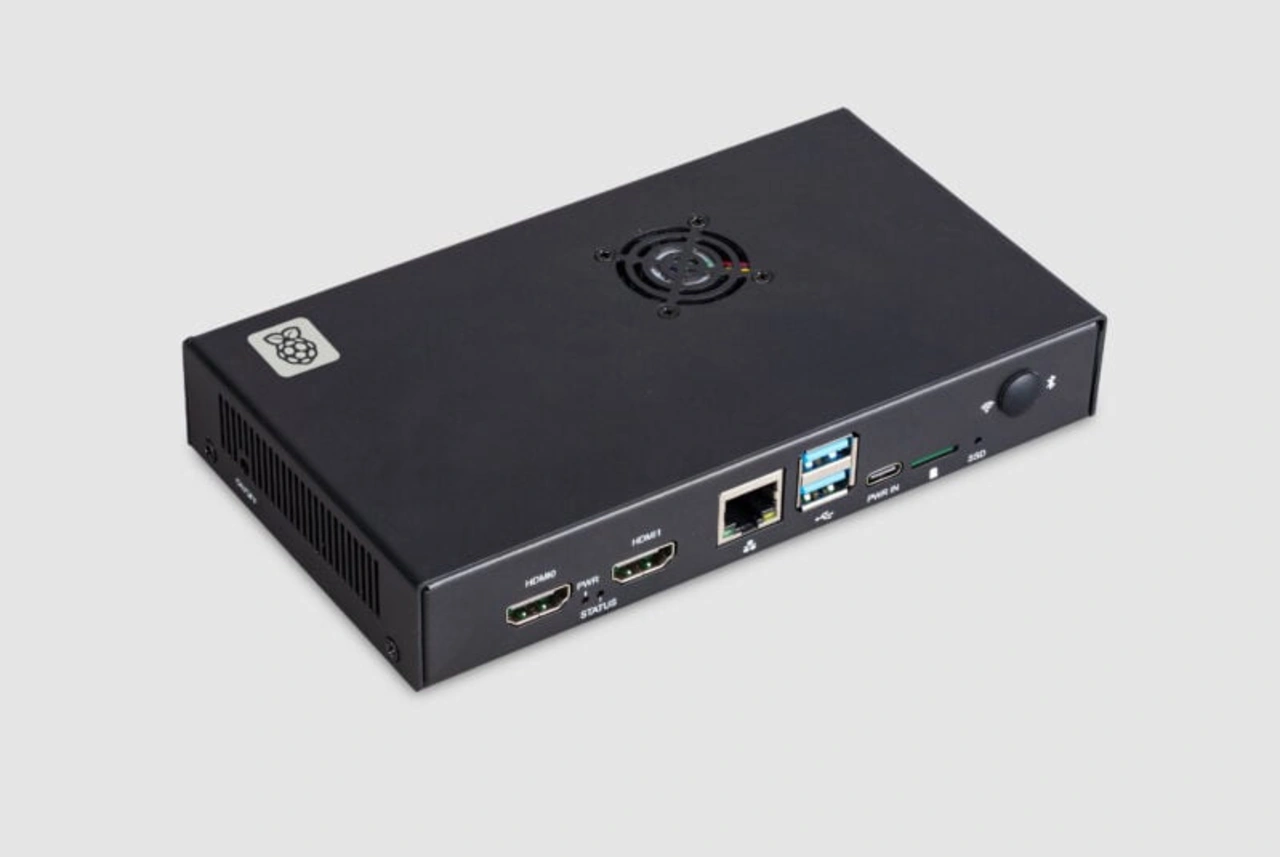Modular version of the Raspberry Pi 5
Raspberry Pi released its Compute Module 5
As with previous versions of Raspberry Pi’s flagship SBCs, there is now a Compute Module of the Raspberry Pi 5. The CM5 offers a smaller form factor and enables an easier use for industrial and embedded applications.
Raspberry Pi released its »Compute Module 5«. The modular version of the flagship Raspberry Pi 5 single-board computer is priced at 45 US-Dollars. While commercial customers usually use the classic SBCs, between seventy and eighty percent of Raspberry Pi units go into industrial and embedded applications. Those use cases usually need a different form factor or a different set of peripherals.
The Compute Modules make it easier for embedded customers to build custom products which benefit from the investments in the Raspberry Pi hardware and software platform. Every subsequent generation of Raspberry Pi, except for Raspberry Pi 2, has spawned a Compute Module derivative.
Meet Compute Module 5
Compute Module 5 offers the benefits of the Raspberry Pi 5, but in a smaller package:
- A 2.4GHz quad-core 64-bit Arm Cortex-A76 CPU
- A VideoCore VII GPU, supporting OpenGL ES 3.1 and Vulkan 1.3
- Dual 4Kp60 HDMI display output
- A 4Kp60 HEVC decoder
- Optional dual-band 802.11ac Wi-Fi and Bluetooth 5.0
- 2 × USB 3.0 interfaces, supporting simultaneous 5Gbps operation
- Gigabit Ethernet, with IEEE 1588 support
- 2 × 4-lane MIPI camera/display transceivers
- A PCIe 2.0 x1 interface for fast peripherals
- 30 GPIOs, supporting 1.8V or 3.3V operation
- A rich selection of peripherals (UART, SPI, I2C, I2S, SDIO, and PWM)
It is available with 2GB, 4GB, or 8GB of LPDDR4X-4267 SDRAM, and with 16GB, 32GB, or 64GB of MLC eMMC non-volatile memory. 16GB SDRAM variants are expected to follow in 2025.
Compute Module 5 is mechanically compatible with its predecessor, Compute Module 4, exposing all signals through a pair of high-density perpendicular connectors, which attach to corresponding parts on the customer’s carrier board. Additional stability is provided by four M2.5 mounting holes arranged at the corners of the board.
There are a small number of changes to the pin-out and electrical behavior of the module, mostly associated with the removal of the two two-lane MIPI interfaces, and the addition of two USB 3.0 interfaces. A detailed summary of these changes can be found in the Compute Module 5 datasheet.
Accessories for the CM5
Alongside the Compute Module 5 there will also be a range of new accessories to help users get the most out of the new modular platform.

IO Board: Every generation of Compute Module has been accompanied by an IO board, and Compute Module 5 is no exception. The Raspberry Pi Compute Module 5 IO Board breaks out every interface from a Compute Module 5. It serves both as a development platform and as reference baseboard (with design files in KiCad format), reducing the time to market for Compute Module 5-based designs.
The IO Board features:
- A standard 40-pin GPIO connector
- 2 × full-size HDMI 2.0 connectors
- 2 × 4-lane MIPI DSI/CSI-2 FPC connectors (22-pin, 0.5mm pitch cable)
- 2 × USB 3.0 connectors
- A Gigabit Ethernet jack with PoE+ support (requires a separate Raspberry Pi PoE+ HAT+)
- An M.2 M-key PCIe socket (for 2230, 2242, 2260 and 2280 modules)
- A microSD card socket (for use with Lite modules)
- An RTC battery socket
- A 4-pin fan connector
- Power is provided by a USB-C power supply (sold separately)

IO Case: To deploy the IO Board and the Compute Module in combination as a finished product, the IO Case turns it into a complete encapsulated industrial-grade-computer. The metal case includes an integrated fan, which can be connected to the 4-pin fan connector on the IO Board to improve thermal performance.
Cooler: The Raspberry Pi Cooler for the CM5 is a finned aluminum heatsink, designed to fit on a Compute Module 5, and including thermal pads to optimise heat transfer from the CPU, memory, wireless module and eMMC.
Antenna Kit: Wireless-enabled variants of Compute Module 5 provide both an onboard PCB antenna, and a UFL connector for an external antenna. Use of the Raspberry Pi Antenna Kit (identical to that already offered for use with Compute Module 4) with Compute Module 5 is covered by the FCC modular compliance.
Development Kit: The Raspberry Pi Development Kit comprises a Compute Module 5, an IO Board, and all the other accessories you need to start building your own design.










